It’s human nature to want to make sense of our world so that we might predict or control it. We seem to have a built-in desire to know and to understand. This desire is even stronger when we’ve had a negative experience.
When a rider has experienced a fall or other riding-related injury, it’s common for people to feel a sense of trepidation getting back into the saddle. Depending on the nature of the accident and the personality and/or history of the rider, trepidation may give way to anxiety, fear or even panic. Under these conditions, we want to know how to address our fear. We want a plan. We want certainty. We want to know that everything is going to be OK if we follow the steps and do what we’re supposed to do.
If you search Amazon for books on “Overcoming Fear and Anxiety” you’ll get somewhere on the order of 650 results. In addition, there are numerous books dedicated specifically to overcoming fear of riding or fear of horses. While many of these books contain helpful information, useful techniques and pearls of wisdom, it occurred to me a long time ago that if anybody truly had “The Answer” there would be no need for the other 649 books. The harsh reality is that, no matter how much we know about overcoming fear and anxiety or how many useful techniques or methods are available to us, each individual’s road to success will be different. It will be unique to that person. Our path forward depends on a multitude of factors, including who we are as individuals, our circumstances, our motivations and goals, and our resources, to name just a few.
Two weeks ago I had a serious fall from my horse. If you missed the original post you can read about it here. In the spirit that everyone’s recovery is different, I thought I would share some of my own thoughts, reflections and choices as I return to riding. This isn’t offered as a blueprint for overcoming fear, but as a reflection on what has been important to me, as well as many of the clients I’ve helped through their fear over the years.
When I started to think about writing this blog post, I realized that there are so many different things to think about in addressing my path to recovery that it was hard to know where to start. So, the first step was to simplify and focus. I did my best to assess my starting point, identify the main questions and challenges ahead and then break them down into workable steps.
Here’s my current assessment.
Physically, while cleared to ride, I’m not yet 100 percent. My mind is clear, but the injuries to my chest, ribs and shoulder have not yet fully healed. I would say I’m at 80 percent.
Emotionally, I’m experiencing moderate anxiety about riding my young horse. Interestingly, since I don’t remember the accident, I’m experiencing far less anxiety about getting back on than I have from other accidents where I was conscious throughout the experience. I feel a degree of confidence from the fact that I’ve overcome anxiety and fear several times before when recovering from other falls and injuries. I also draw some comfort because I’m a far more skilled and knowledgeable horseman than I was 12 years ago, the time of my last serious accident. Finally, my trepidation or anxiety this time around seems localized to my young horse. The thought of getting on other horses, even ones I’ve not been riding regularly over the past year, doesn’t seem to phase me. As my physical strength returns and I have the opportunity to ride, I’ll let you know if that changes.
In my attempts to simplify and focus my plan for recovery, I’ve settled on two main priorities for myself. The first is to do my best to minimize physical risks to myself. I’m not a professional rider/trainer, I’m not in any competition for points or year-end awards, and I have a family with two young boys to support. I ride because I love horses, and my riding goals are not tied to a specific timetable or specific performance goals. I fully understand and accept that there are inherent risks in riding horses and perhaps even more in riding a young horse. I accept these risks because this is what I love to do.
However, given my other life priorities, the path I choose may appear overly conservative to some. I realize that I’m far more likely to be successful if I’m patient with myself and my progress, rather than adding a level of stress and worry by pushing forward too quickly and increasing the risks.
The second priority is to maximize the probability of success. For me, this involves setting things up in a way that I know will be best for me. It also means setting things up in a way that I think will be best for my horse. For example, I know that I do my best with support from others, both in terms of companionship and having an ear to talk through my thought process, including my personal experience and what I’m reading in my horse. My first several rides will be in good company.
I also know I’m most confident in a context or setting in which I have had a great deal of prior success. My first several rides will be in my arena at home where I would have a good chance of recreating the context in which my horse and I have experienced many good (and a few great) rides over the past year. I also know I’m at my best when I’m not rushed. My first several rides will be at a time when I have the time to take my time. This also helps me to limit the distractions of life and to be as focused and relaxed as possible. For my horse, I plan on starting from the beginning while looking for holes in my skills and in his training. I plan on taking my time to strengthen his foundation and rebuilding my trust in him, and hopefully being a more trustworthy partner for him.
———————————–
Since starting this post yesterday morning, the process has begun. I finally felt more than well enough to attempt some light riding. So, I went out last night with my young horse, my son and his mare with the simple goal of sitting astride my horse and assessing my own emotions and reactions. It was supposed to be a short and simple process ( insert knowing smile here). We started with some ground work where my horse chose to display his “athleticism” which, while admittedly impressive, only served to raise my anxiety. It only took a moment to realize that my goals for that night had changed from assessing my emotions from the back of my horse to helping my horse get a better handle on his emotions. I took the time that it took to help him get focused and connected with me. When he was settled, relaxed and connected, I took a deep breath, let it out and mounted, tested my neutral lateral flexion, backed him up, walked in a small circle and dismounted. My anxiety was not as strong as I had earlier anticipated, but I wanted to get myself to a better place before I quit. I mounted again walked in small circles and figure eights testing his responsiveness to my leg aids, and when I finally felt my adrenaline drop and I was relaxed, I dismounted and called it a night.
Today is a new day and tomorrow is yet another. I have no idea how long this is going to take. I do know that it’s going to take commitment, effort and consistency on my part. I hope to be able to report a few more steps forward by the time I write again.

